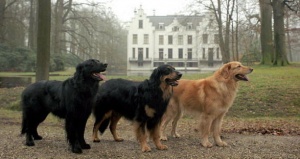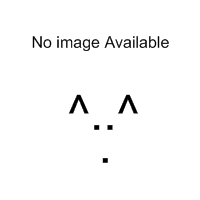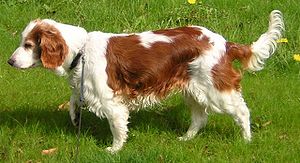 |
| Vital Statistics: |
| Place of Origin: Germany |
| Group: Herding, Guard dog |
| Height: males 25-28 in., females 24-27 1/2 in. |
| Weight: 55-90 lbs. |
| Life span: 10-14 yrs. |
| Trainability: high |
| Good with children: yes, if properly socialized |
| Good with other pets: may be aggressive toward other dogs, accept other pets |
What is the origin of the Hovawart?
The Hovawart was discovered in the Black Forest region of Germany dating back to medieval times. In German, the name Hovawart means “estate guard dog,” its original job. The first recorded history of the Hovawart was in 1210 when a German castle was overrun by Slavic invaders who killed everyone. One life, the infant son of the Lord of the castle, was saved when one of the Hovawarts, although wounded, dragged the baby to safety in a neighboring castle. In later years the Hovawart was being replaced by breeds such as the German Shepherd Dog. But in the early 20th century, with careful work, the breed was revived.
What does the Hovawart look like?
The Hovawart has been compared in looks to the Golden Retriever. Males are 25-28 inches tall and females are 24-27 1/2 inches tall. Weight is between 55-90 lbs. The nose is black. Eyes are brown and oval-shaped. Ears are triangular and dropped. The coat is long, dense and slightly wavy. Colors are black and gold, black or blond. Weekly brushing and combing keep the coat tangle-free and neat.
What is the temperament of the Hovawart?
The Hovawart is very intelligent and can think and work independently. They are natural guard dogs and excel at this task. The Hovawart is devoted and loyal with their family, and bonds particularly with its master. They can be reserved with strangers. Hovawarts whould receive early, positive obedience training and socialization. All dogs respond to positive reinforcement. Dogs that receive harsh training often become timid and fearful or overly aggressive. They are good with children when well-socialized. They may be aggressive towards other dogs but are more accepting of other pets. Hovawarts are active dogs and should have lots of exercise and if possible, a job to do. They do best in a home where they have a large area to exercise.
What is the Hovawart used for?
Hovawarts do excellently at any working dog activities. They take part in agility trials and do particularly well at search and rescue and tracking. Given proper training and exercise, they are excellent, loyal family companions.
Possible Health Issues
Hip dysplasia, hypothyroidism, osteochondritis dissecans, dilated cardiomyopathy, bloat/gastric torsion.
- Australian Cattle Dog
- Australian Kelpie
- Australian Shepherd
- Bearded Collie
- Beauceron
- Belgian Sheepdog – Groenendael
- Belgian Tervuren
- Bergamasco
- Berger Picard
- Blue Lacy
- Border Collie
- Bouvier des Flandres
- Briard
- Cardigan Welsh Corgi
- Catahoula Leopard Dog
- Collie
- English Shepherd
- Entlebucher
- Finnish Lapphund
- German Shepherd
- Icelandic Sheepdog
- Laika
- Lancashire Heeler
- Miniature American Shepherd
- Mudi
- Old English Sheepdog
- Pembroke Welsh Corgi
- Polish Lowland Sheepdog
- Puli
- Pumi
- Pyrenean Shepherd
- Shetland Sheepdog
- Standard Schnauzer
- Swedish Vallhund
- Affenpinscher
- Boxer
- Dachshund
- Deutscher (German) Pinscher
- Doberman Pinscher
- Eurasier
- German Shepherd
- German Shorthaired Pointer
- German Spitz (Giant, Standard, Toy)
- Giant Schnauzer
- Great Dane
- Leonberger
- Miniature Pinscher
- Miniature Schnauzer
- Pomeranian
- Poodle
- Pudelpointer
- Rottweiler
- Standard Schnauzer
- Weimaraner


